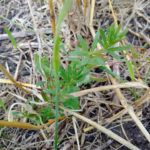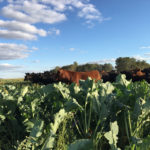
Tag Archives Sustainable agriculture

Sequestering carbon won’t solve climate change

Manitoba zero-till pioneer inducted into conservation hall of fame
Robert (Bob) McNabb called for greater passion for soil, aligning profit with ecology

Calling all cover croppers!
A survey is looking for hard numbers on the practice and what it looks like on Prairie farms

Roundtable to form code of sustainable crop practices
This program will help producers tell the story of crop sustainability in Canada, something Cam Dahl says isn’t done enough

Fall management key to weed resistance
It’s in the fall you see what worked and what you can change up for next year

Soil is complicated… so are people
Soil Council of Canada's summit on soil health explored diverse issues of soil health across Canada and how to win people to the cause

Calculating a good cover crop plan
Set yourself up for success when it comes to cover crops

Soil degradation a costly global issue
About a third of the world’s soil is degraded, which has economic and food security implications

Mixed farmers need not apply for cover crop funding
The province says cover crop funding under Ag Action Manitoba only allows grazing on ‘stockless farms’

Carman event serves up common ground on soil health practices
Canadian and African agronomists shared perspectives on conservation agriculture at a recent Canadian Foodgrains Bank forum


